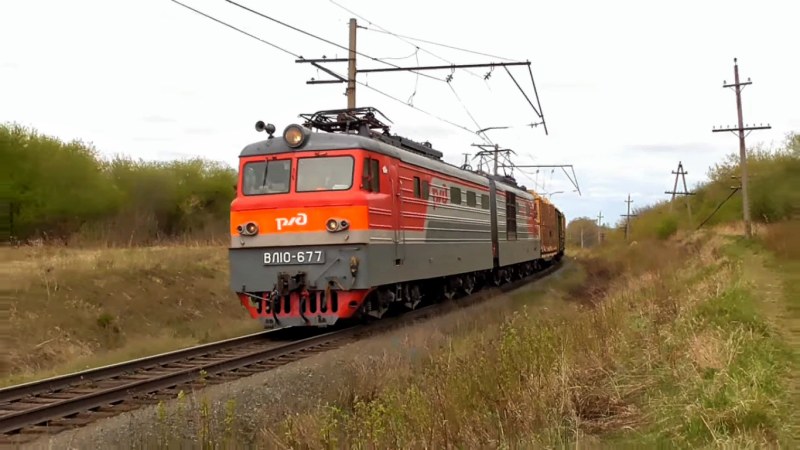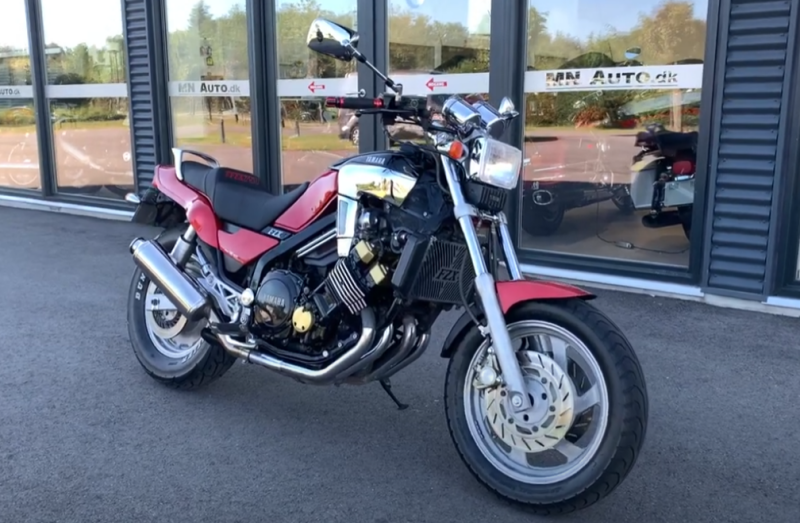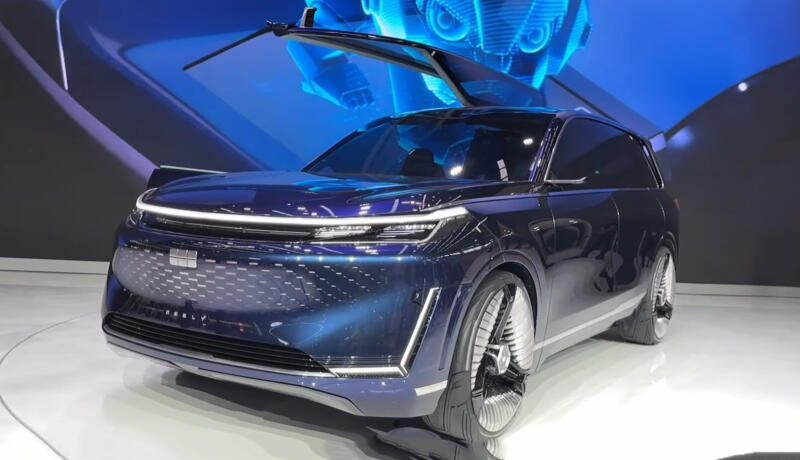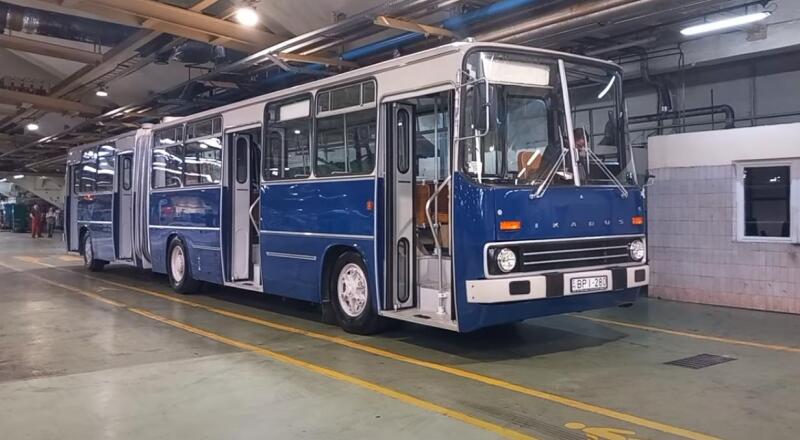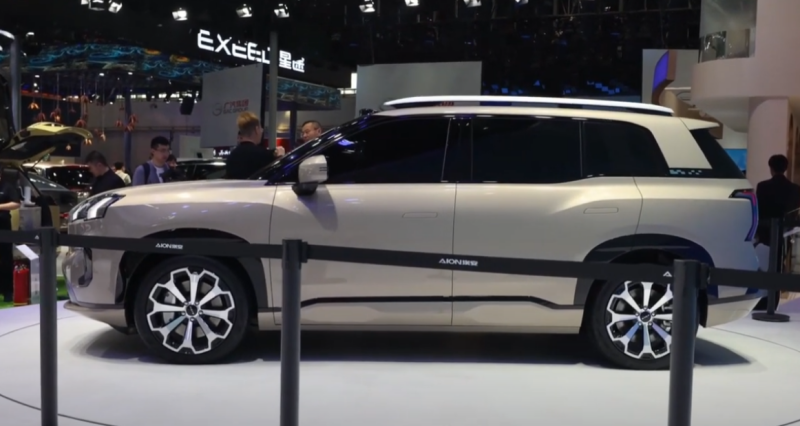For example, if you pay attention to electrified areas, there were two types: with alternating and direct current. Accordingly, locomotives with the same characteristics were required. Of course, ideally it was necessary to create a universal technique capable of moving anywhere. But at that time there were no such projects yet.
 VL10 operates a flight with freight cars. Photo: youtube.com
VL10 operates a flight with freight cars. Photo: youtube.comThere was another task on the agenda. The existing models of the early 50s (such as VL8) were no longer suitable for operation in conditions of ever-increasing volumes of cargo transportation throughout the country. In general, electric locomotives of that period were of an outdated design and of insufficient power. This problem needed to be resolved as quickly as possible.
To the 40th anniversary of Soviet Georgia
Not only engineers, but also local specialists complained about the old equipment. Many experienced drivers, who also operated steam-powered locomotives, practically made a number of complaints about the VL8 (although, at one time, it was considered a rather progressive model):
✅ heavy carts
✅ increased noise in the cabin
✅ rigid type spring suspension
These and some other design flaws of the existing railway transport were proposed to be eliminated by engineers in the new model of electric locomotive. The honorable and responsible task was entrusted to the Georgian comrades.
 Enough power for any tough job. Photo: youtube.com
Enough power for any tough job. Photo: youtube.comEngineers from the design bureau of the Tbilisi Electric Locomotive Plant (TEVZ) completed the task in a fairly short time. By mid-summer 1960, the finished project was sent for review and approval to Moscow - the USSR Ministry of Railways.
The new design was approved, but, of course, it was not without ideology. It was named VL10 (in honor of Vladimir Lenin). And they decided to coincide with the start of its production to coincide with the fortieth anniversary of the establishment of Soviet power on the territory of the Georgian SSR.
Thus, with the light hand of domestic officials, the initial prototype T8 (Tbilisi, eight-axle) turned into a successor to the mass series of Soviet electric locomotives of the “VL” type. Assembly at the main facilities started in 1961. Given the urgent need for a large number of rolling stock, they resorted to the traditional Soviet system - producing the same model at the facilities of several specialized factories. Therefore, the Georgian locomotive received a fairly wide geography of birth:
✅ Tbilisi (TEVZ)
✅ Novocherkassk (NEVZ)
✅ Chelyabinsk (CHERZ)
The latter enterprise was considered primarily ancillary facilities. Its main specificity is indicated in the name - Chelyabinsk Electric Locomotive Repair Plant. But, over time, as often happens in the transport sector, those who repaired other people's equipment began to assemble their own.
In 1961, the first locomotive was created, the design of which appeared under the leadership of the chief engineer of the bureau G. Chirikadze. It was also called T8-001. But since 1963, the equipment entered mass production under an ideologically consistent name - VL10.
 The driver's seat of the VL10 electric locomotive. Photo: youtube.com
The driver's seat of the VL10 electric locomotive. Photo: youtube.comThey decided to carry out the first tests of the finished prototype nearby, on the Transcaucasian railway (Tbilisi - Zestafoni section). After their successful completion, the prototype was sent to the “bride” in the capital, as a participant in the Moscow exhibition of new locomotives.
In the spring of next year, its trial operation continued on the experimental ring of VNIIZhT. Ahead of the electric locomotive were traction and power tests, which were completed at the South Ural Railway, not far from Chelyabinsk.
Checks have shown that the eight-axle locomotive meets the requirements. Testers recommended it for further use in freight traffic with a speed limit of no more than 100 km/h. True, the manufacturer was ordered to eliminate some design flaws:
✅ gaps between carts
✅ creation of an initial tightening in the return device
✅ add shock-absorbing elements to the axle boxes
The fact that the equipment created in the shortest possible time remained “damp” is confirmed by noticeable design differences between the prototypes and production samples of the VL10. Therefore, the transition to mass production was accompanied by several intermediate stages:
✅ 1961 – appearance of the first T8-001
✅ 1962 – assembly of T8-002
✅ 1963 - one-piece release already called VL10
✅ 1968 – start of full-fledged mass production
✅ 1969 - connection to the process of the Novocherkassk plant
Installation of more powerful (than previous models of electric locomotives) electric motors, friction vibration dampers and improved sound insulation of the driver's cabin. These and some other positive aspects in the design opened up a “green street” for the Georgian novelty.
Its good characteristics made it possible in some places to make non-core use of the equipment. Despite the fact that the electric locomotive was primarily created for heavy freight work, it was sometimes used as a tug and in passenger traffic.
 Sensors and devices VL10, which are monitored by the driver. Photo: youtube.com
Sensors and devices VL10, which are monitored by the driver. Photo: youtube.comThe VL10 was most widely used at the Tuapse branch in Georgia and at the Ukrainian border section Lvov - Chop. This required the installation of additional equipment - stationary electric heaters for passenger cars.
Technical component of locomotives
The factory design did not provide for the operation of VL10 using a system of many units (SME). Therefore, in areas with a heavy profile, we tried to somehow get out of the difficult situation. The locomotives that worked there were equipped with makeshift connectors with control circuit wiring. This simple technique made it possible to combine the traction forces of several machines in difficult areas, even in field conditions. Here are the main characteristics of the electric locomotive:
✅ height - 5,12 m
✅ total length - 32,84 m
✅ width - 3,16 m
✅ recommended speed limit – 100 km/h
It is also worth adding that each section had a mass of 91 tons, and the locomotive operated on direct current with a voltage of 3 kV. Its engines produced a total continuous power of 4480 kW (6091 hp). The electrical part has received broad unification with VL60 elements. Initially, the VL10 was a cargo type, but later a recommendation appeared to use it as a cargo-passenger vehicle. The sections were connected to each other by a permanent type coupling, and the classic SA-3 was installed at the ends.
Over time, it acquired a number of modifications; we will mention the most interesting of them. Georgian guys created a special model 4E10, using elements of VL10 and the subsequent VL11. The “777th” factory copy of the locomotive was made as a single-section motrice for the needs of the management of the South Ural Railway.
 Power units of the VL10 electric locomotive. Photo: youtube.com
Power units of the VL10 electric locomotive. Photo: youtube.comAfter successful operation in passenger traffic, a special prototype VL10P was created. But it remained at the prototype level. Perhaps the most interesting is the 100-ton VL10U, produced from 1974 to 2005. 979 units were assembled in this version.
Assembly of the main modification at the facilities of three factories lasted from 1961 to 1977. During this time, 1907 electric locomotives set off on the country's roads. The locomotive also became the launching pad for the future production VL11 and the experimental VL12.
